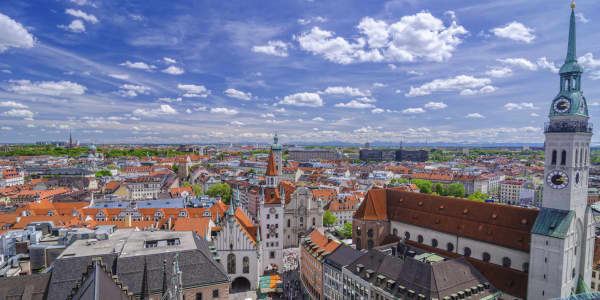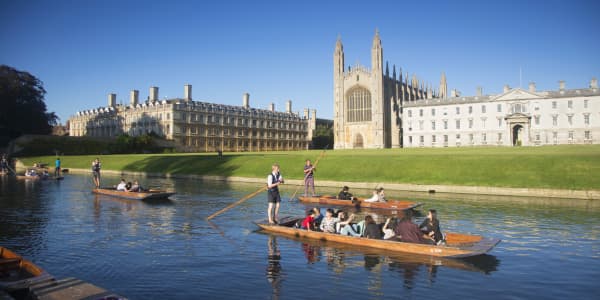Walking down your city street, you're more likely to see litter and a neglected, compacted patch of mud than a calming garden.
For Richard Reynolds, a freelancer working in advertising and living in south London, this is a crime.
"I grew up in Devon, a rural part of the world, and saw the neglect in the public spaces around me," he told CNBC.com.
So in 2004 he decided to take matters into his own hands, planting lavender and cyclamen into a neglected flowerbed outside the tower block he lives in. After getting a positive reaction from his friends and neighbours, he started to plant more and more flowers and plants in and around local public spaces.
"I now have a network of patches that, in some ways, feel like my garden," he said.
"It's gardening in the community rather than a community garden. A community garden generally has some kind of fence or a clearly demarcated space, this doesn't. This is round the bottom of a tree in the pavements, or on the side of a roundabout, or in an abandoned council planter."
(Read more: World's Best City to Live Retains Crown)
Reynolds started a blog, 'Guerrilla Gardening', detailing his exploits. It soon gained a loyal following of fans who were either doing the same as he was – illicit gardening in public spaces – or interested in following his model.
Almost 10 years on from his initial act of green-fingered resistance, the notion of taking back neglected urban spaces and making them flourish is as strong as ever. In a world where green space is at a premium and cities are becoming overloaded – the World Health Organisation predicts that by 2030 six out of 10 people will live in urban areas – Reynolds argues it's perhaps more important than ever.
"If we're going to be building denser cities – which I think we should be, I'm all for more high rises and for urban density to increase – it obviously comes at a price," Reynolds added. "And one of the solutions is to involve people more actively in managing the public realm."
Can surreptitiously adding a bit of green to our public spaces have a profound ecological benefit?
(Read more: Going Green on the Frontlines of the Economy)
"Compacted mud, gravel and sand, or grass that is occasionally mown: that is the option without guerrilla gardening," Reynolds said. "With it, you get more absorbent, verdant verges and patches that are going to be more attractive to pollinating insects, and it's good for reducing the temperature of an urban heat island. Those are the physical benefits, but there are emotional ones too. There is an area that is better cared for, you can see the touch of a human hand in a positive way."
There are challenges, though. Some public authorities and local councils don't take kindly to people digging up patches of grass, or planting flowers on roundabouts. When Ron Finley, an American guerrilla gardener living in South Central Los Angeles, started to plant vegetables in the dirt outside his home, he found himself cited for gardening without a permit.
"I have got in trouble," Reynolds admitted. "But because I am quite pragmatic and bloody minded about it all, I generally get away with it."
Bloody mindedness seems to be the key. Neither Finley, nor Reynolds, have let up in their efforts to add a touch of green to urban deserts. And things are slowly changing. Finley was eventually allowed to continue growing urban crops.
In the UK, Lambeth Council, in London, has launched Community Freshview, which offers its residents assistance in beautifying their streets, be that through gardening or sprucing up disused areas with a lick of paint.
Charmian Kenner, chair of the Sulina Road, Morrish Road & Wallis's Cottages Residents Association in Lambeth, told CNBC.com that the scheme had benefited her area.
(Read more: Climate change risk to one-third of global GDP: Report)
"We've discovered that if you put any kinds of plants or flowers on the street, this deters people from dumping rubbish. They begin to see the area in a different way. If you make the area look nice and attractive it no longer conjures up thoughts of dumping rubbish."
For Reynolds, the future can only get greener.
"For me, guerrilla gardening is a stepping stone," he said. "I dream of a time, decades hence, where people will look back and think, 'gosh, there were guerrilla gardeners who had to risk getting prosecuted for criminal damage, with absolutely no support, and occasionally obstruction from the authorities. And now look, we have a scheme in every community where we are absolutely making the most of every little scrap of land in the city.'"
Follow us on Twitter: @CNBCWorld




